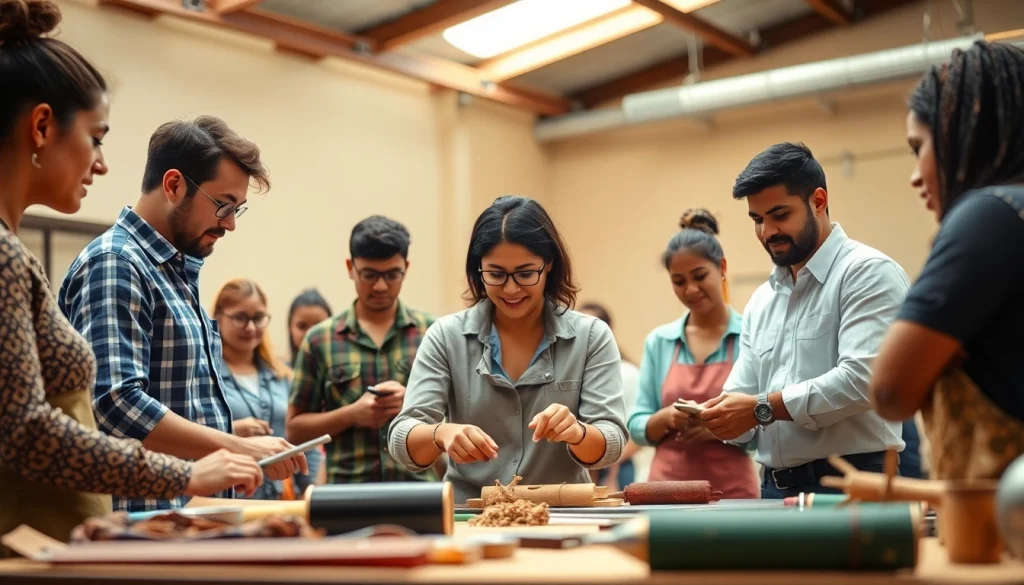Understanding Craft Training Colorado
What is Craft Training Colorado?
Craft training Colorado encompasses a variety of structured programs designed to provide individuals with skills and knowledge in various crafting disciplines. This training can range from hands-on workshops to intensive classes that cover a vast array of topics such as pottery, woodworking, sewing, and more. The goal is to foster creativity, skill development, and a sense of community among participants. craft training colorado aims to offer accessible resources and support for those interested in pursuing crafting as a hobby or profession.
The Importance of Craft Training in Colorado
In Colorado, craft training is not simply about acquiring a new hobby; it is deeply rooted in the community and its culture. The picturesque landscapes and vibrant artistic communities contribute to the flourishing craft scene in the state. Craft training programs play a crucial role in maintaining and promoting the rich heritage of local artistry while encouraging personal expression and emotional well-being.
Types of Craft Training Programs Available
Craft training programs in Colorado come in various formats and focus on different aspects of crafting. Here are some of the prominent types:
- Hands-on Workshops: These often cater to beginners and allow direct access to materials and expert guidance.
- Online Courses: Many programs have adapted to digital formats, offering flexibility for individuals with busy schedules.
- Certification Programs: Some institutions provide certification in specific crafts, making it a viable career pathway.
- Community Classes: Local community centers often offer classes that bring together individuals from diverse backgrounds to learn and share experiences.
Benefits of Participating in Craft Training Colorado
Skill Development and Professional Growth
Engaging in craft training encourages participants to develop both technical and soft skills. Technical skills encompass the specific abilities required for crafting, such as sewing techniques or woodworking methods. Soft skills, on the other hand, include problem-solving, communication, and collaboration, which are essential in both personal and professional environments. Many of these skills are transferable and can enhance career opportunities in various industries.
Building Community and Networking Opportunities
Craft training helps foster a sense of belonging and community among participants. By collaborating and sharing ideas, individuals can form meaningful connections that extend beyond the classroom. Networking opportunities may lead to collaborations for future projects or introductions to potential customers for those aiming to establish a business in crafting.
Promoting Mental Well-Being through Craft Activities
The act of creating through crafting has been shown to promote mental well-being. Engaging in creative activities can reduce stress, improve mood, and enhance overall satisfaction in life. Crafting can serve as a form of therapy, providing individuals with an outlet for self-expression and emotional release. Participants often report feeling more relaxed and fulfilled after engaging in crafting sessions.
How to Choose the Right Craft Training Program in Colorado
Assessing Your Personal Goals and Interests
Before enrolling in a craft training program, it’s important to assess your personal goals and interests. Consider what specific crafting skills you wish to develop and how much time you can realistically commit. Whether your interest is in pottery, painting, or textile arts, understanding your objectives will guide you toward the most suitable program for your needs.
Evaluating Program Structure and Curriculum
Different craft training programs may have varying structures, so evaluating them is critical. Look for programs that align with your learning preferences—some may be more hands-on, while others may include theoretical components. Reviewing the curriculum can give you insights into what you will learn and the skills you will acquire during the training.
Reading Reviews and Testimonials
Testimonials and reviews from past participants can provide valuable perspectives on the quality of training offered. They can highlight the strengths of the program and any potential areas for improvement. Engaging with an online community or social media groups dedicated to crafting can also provide firsthand accounts of experiences in various programs.
Getting the Most Out of Your Craft Training Colorado Experience
Tips for Active Participation and Engagement
To maximize the benefits of craft training, active participation is key. Engage fully with instructors and ask questions whenever you need clarification on a concept. Sharing your ideas and creations with fellow participants can enrich your experience and lead to constructive feedback that can enhance your crafting skills.
Setting Realistic Goals During Training
Setting realistic, achievable goals can help maintain motivation throughout the crafting process. Break down larger aspirations into smaller, manageable objectives that can be accomplished during the training period. This approach will not only enhance your learning experience but also promote a sense of achievement as you accomplish each goal.
Fostering Relationships with Instructors and Peers
Building relationships with instructors and fellow participants can enhance your learning journey significantly. These connections may lead to future collaborations, mentorship opportunities, and continuing friendships that last beyond the duration of the training program. Networking in this manner can provide continuous support as you navigate the crafting landscape.
Future of Craft Training Colorado: Trends and Innovations
Emerging Technologies in Craft Training
The integration of technology into craft training is rapidly evolving. Emerging technologies, such as 3D printing and digital design software, are revolutionizing how crafts are taught and executed. Educators are increasingly leveraging these innovations to provide participants with cutting-edge skills that are relevant in today’s market.
Incorporating Online Learning Platforms
As digital learning becomes more prevalent, many craft training programs are transitioning to online platforms. This flexibility allows individuals to learn at their own pace and convenience, accommodating those with busy schedules while also broadening access to quality education irrespective of geographical constraints.
Sustainability and Eco-Friendly Practices in Crafting
With a growing emphasis on sustainability, many craft training programs are now incorporating eco-friendly practices into their curriculum. This includes using sustainable materials, promoting upcycling, and educating participants on environmentally responsible techniques. Participants are learning to create beautiful pieces while also considering the ecological impact of their crafting methods.





